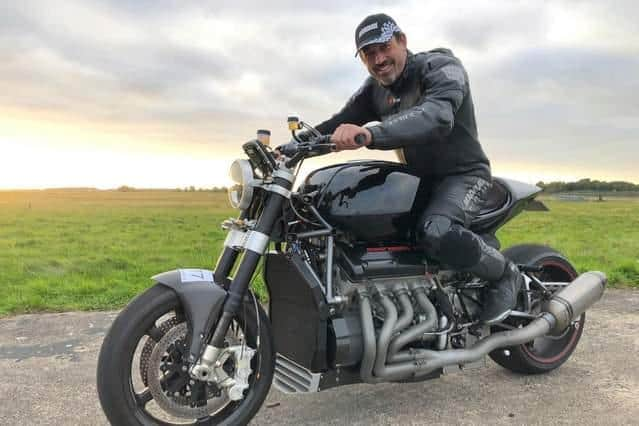Zef Eisenberg inquest: Maximuscle founder died attempting to break speed record at Elvington Airfield in Yorkshire
Zef Eisenberg had been travelling at speeds of more than 240mph in a modified Porsche 911 at Elvington Airfield, near York, but when he lost control of the vehicle it flipped over and caught fire.
An inquest held in Northallerton today heard the 47-year-old suffered multiple injuries, after the crash on October 1 in 2020, and was pronounced dead at the scene, at 4.33pm.
Advertisement
Hide AdAdvertisement
Hide AdThe father-of-two, from Guernsey, was best known for launching sports nutrition firm Maximuscle but he also ran the Madmax Race Team, which attempts speed records with motorbikes and cars.


The crash happened at the same airfield where Richard Hammond almost died in 2006, as he was driving a jet-powered car at speeds of more than 300mph and lost control, while filming for an episode of Top Gear.
Mr Eisenberg had suffered a broken pelvis and other serious injuries at Elvington Airfield in 2016, when he crashed a gas turbine engine motorbike while riding at around 230mph.
But he returned four years later with his modified car to set several landspeed records within a specific classification, including the fastest mile with a “flying start”.
Advertisement
Hide AdAdvertisement
Hide AdGraham Sykes, from Straight Liners Ltd, was one of the marshals who was supervising the record attempts and he spoke to Mr Eisenberg about using the parachute braking system before the crash.
He explained the driver must always deploy the parachute before pressing the brakes, otherwise the weight of the vehicle would be transferred forward and the rear would be lifted off the ground.
He told the inquest Mr Eisenberg completed five “perfect” runs as the chute was deployed at the correct time and the “car stopped short and straight and under control”.
But when the driver applied the brakes at the end of his attempt at completing the fastest mile with a flying start, Mr Sykes said the back of the Porsche “appeared to lift and go to the right as air had got underneath the car”.
Advertisement
Hide AdAdvertisement
Hide AdHe added: “In my opinion, he got the parachute and braking sequence wrong.
“He did not pull the parachute until he was through the finishing timing beam, as opposed to a couple of seconds before as in the previous runs that day. He also pressed the brake before the parachute was fully deployed.”
Trevor Duckworth, the timekeeper for the event, also said Mr Eisenberg appeared to brake before the parachute was deployed.
During the inquest, the family asked Mr Duckworth if he was aware the seat belt buckle and anchor points had snapped during the crash.
Advertisement
Hide AdAdvertisement
Hide AdHe said: “Obviously something drastic had happened for that type of injury to happen. I've been around motorsport for 50 years and never ever seen anything like that.”
However, event coordinator Malcolm Pittwood claimed the car “twitched” and turned to the right at the end of the one-mile run, but it had “nothing to do with the parachute”.
He added: “At the time, the parachute was not fully deployed. It had not opened and blossomed as it had done on the previous runs.”
Andrew Bush, a scrutineer from Motorsport UK, told the inquest he inspected the vehicle, which had been fitted with a roll cage and safety harnesses, before the record attempt and “did not identify any safety issues or concerns”.
Advertisement
Hide AdAdvertisement
Hide AdHe also said there were some issues with the car’s engines during his initial runs, including the detachment of the turbo boost hose, but they were fixed.
The inquest has been adjourned until a date, which will be announced in the coming weeks.
